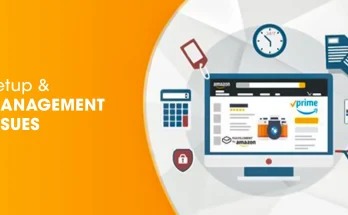Understanding your consumers’ needs and wants has become essential to ensure your company is future-proof.
Listening empowers you to learn from and talk to your customers in order to create ever-improving experiences.
Businesses with quality data are more likely to collect actionable customer insights, which can help them grow their bottom line in the long run and that is why smart companies turn to Enformion.com.
1. So what are consumer insights, exactly?
A consumer insight is an interpretation of data that allows businesses to gain a deeper understanding of how their audience thinks and feels. Analysing human behaviour enables companies to understand not just what their customers want and need, but also why they feel that way.
When conducted effectively, consumer insight research can improve how a company communicates with its customers. This can influence consumer behaviour and ultimately boost sales.
However, collecting valuable consumer insights can be challenging. Here are the key elements needed to gather and use them effectively:
A. Good data quality
Accurate, reliable data is crucial for obtaining actionable insights into consumer behaviour. Without it, decisions may be based on flawed assumptions, leading to poor outcomes or customer dissatisfaction.
B. A dedicated analytics team
An experienced analytics team is essential for interpreting customer data. Without the right skills in place, it’s difficult to understand what the numbers are truly revealing.
C. Consumer research
Recognising and understanding consumer behaviour is vital. Insights should help you connect with customers on an emotional level. This means respecting the results of research, even if they challenge your expectations or preferences.
D. Database, industry consumer insights, and segment marketing
Database marketing uses customer information to create personalised communications. This can lead to customer personas, segmented audiences, and targeted marketing approaches. Testing and learning from these insights helps transform theory into proven strategy.
It’s important to decide whether you need demographic-based insights or industry-specific insights. Industry-focused data can often be more valuable because it reveals unique trends and attitudes within your particular market.
2. What is the difference between market research and consumer insights?
Market research involves gathering information about customers and markets, providing facts about market needs, sizes, competitors, and customer profiles. It tells us what is happening.
Consumer insights, however, go further — combining data with analysis and recommendations for action. This helps shape strategies that directly drive growth.
In short, research reveals what is happening, while consumer insights explain why it’s happening and how to adapt for better customer satisfaction, retention, and profitability.

3. Using consumer insights to amplify your marketing efforts
Consumer insights help analyse the competition
Examining how consumers discuss products and services within your industry can reveal needs, preferences, and opportunities for improvement. Even if they are not directly talking about your brand, their opinions can be highly valuable for refining your offering.
Consumer insights help improve the customer journey
Insights can highlight what customers want at each stage — from awareness through to advocacy — and identify where the journey is falling short.
For example, if customers express frustration with long response times, you may need to streamline customer support. If they struggle to find information online, improving website navigation could help.
Understanding customer needs at each stage allows you to enhance their experience, increase conversions, and ultimately drive revenue growth.
Consumer insights help personalise your marketing
While mass marketing treats all customers the same, personalisation tailors messaging to different audience segments, increasing relevance and engagement.
Consumer insights reveal why customers choose one product over another, helping you refine personas and adapt your approach for different segments.
Personalisation can be achieved through data-driven messaging, behaviour-based recommendations, and targeted campaigns — all informed by robust consumer insights.
Getting started with consumer insights
- Establish what you want to learn: Define your questions and the problems you aim to solve before starting your research.
- Identify your resources: Determine how you’ll collect and analyse data, who will be involved, and what timelines are realistic.
- Choose your audience and collection method: Decide whether to target specific customer groups and whether to use surveys, reviews, interviews, or other data sources.
- Develop an action plan: Once you have the insights, plan how they’ll be shared and implemented across teams, strategies, and processes.
Collecting consumer insights requires effort, but the rewards can be significant — helping you better understand your audience, refine your marketing, and increase long-term business success.




